Bumblebee - insect: description, features, lifestyle and habitat
One of the close relatives of the honey bee is the bumblebee, a large and beautiful insect that has an important function in nature and crop production. You will find detailed information about the structure of the body, the characteristics of habitat and nutrition, as well as interesting facts about the bumblebee in the article.
Description, structure and characteristics of the bumblebee
We offer a closer look at the insect in question and first find out how it looks. Bumblebee is part of the same family with honey bees - real bees, and a hymenopteran squad. He has a thick furry body with medium or large sizes.
Did you know? Bumblebees are considered the most cold-resistant insects. The thick hairy cover of the body and the ability to quickly and often contract muscles allow them to quickly warm the body to a temperature of + 40 ° C, so they can live high in the mountains and in the tundra.
Females reach a length of 1.3–2.8 cm, males 0.7–2.4 cm. The largest bumblebee is a giant Asian species. It lives in the eastern regions of Asia and in Japan. Its huge body grows to 5 cm, and its wingspan is 8 cm.
The structure and body parameters of the female and male are somewhat different. Females have an elongated head with a rounding at the back of the head, and the upper lip is in the form of a rectangle. They have a shiny and smooth outer side of the hind tibia, which form a “basket” for collecting pollen and nectar.

In males, the head in shape resembles a triangle or oval, has a thin puncture. Hind tibia widened at apex. Insects have a pair of eyes located on the sides of the head in the same line. The oral apparatus has a long trunk - from 7 to 19 mm, and strong jaws. Only females have a sting. The body color of bumblebees is most often yellow-black, with stripes, the lower part is white.
However, there are species that have red and orange stripes or a completely black body in color. Aggression in these insects, in contrast to their relatives - honey bees, is practically absent. They can sting, but they do it extremely rarely - if they threaten their nest or cause harm. But their bite is carried by a person much more painful. Bumblebee sting is smooth, can be used repeatedly.
Important! To avoid a bumblebee bite, it is necessary to avoid bringing it to an excited state. Do not abruptly wave your hands, beat him, drive him away, run away.
Species of bumblebees
In nature, there are about 300 species of bumblebees. Some of them are common and well studied, others are rare. Some are on the brink of survival and are listed in the regional Red Books.
We will introduce you to several main types:
- Lugovoi . It lives in European countries, in Russia and Kazakhstan. Females grow up to 1.7 cm, males up to 1.3 cm. They differ in a dark-colored head and a bright yellow collar. The belly is striped - yellow-black. Its bottom is colored in orange. Representatives of this species inhabit the soil and in the bushes.
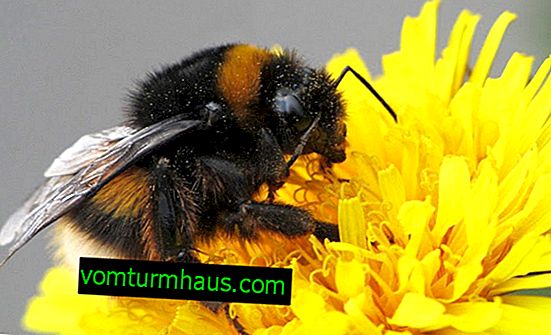
- City He lives in Eurasia. Females have a body up to 2.2 cm long, males up to 1.6 cm. They have a reddish chest and a belly with a white end. They nest over the soil.
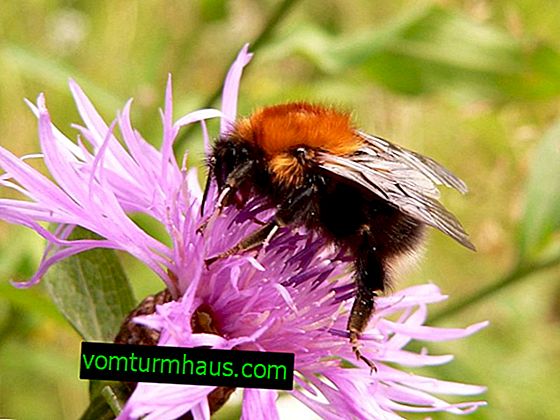
- Steppe . Representatives of the species live on the plains and in the mountains of the eastern regions of Europe, in Turkey, Iran, Mongolia. They have a gray-yellow body. Sizes of females are up to 3.5 cm, males are up to 2.1 cm. They arrange nests in abandoned burrows underground.
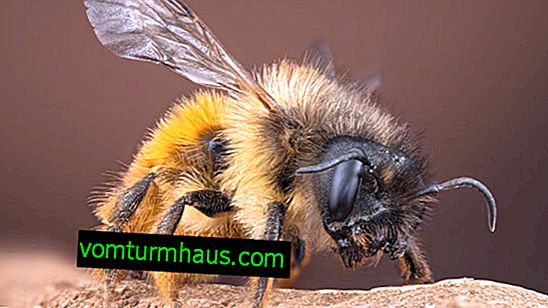
- Underground . The species range is Europe, Asia. The body of females reaches a length of 2.2 cm, males - 1.6 cm. It is painted in a faded yellow and dirty white color with dark stripes. Insects live in the holes left by rodents.

- Reddish . It inhabits the southern and central regions of Europe, Ukraine, Russia, Asia Minor. It can be found in southern Africa and the Azores. Lives underground. Females have a body length of 2 cm, males - 1.6 cm.
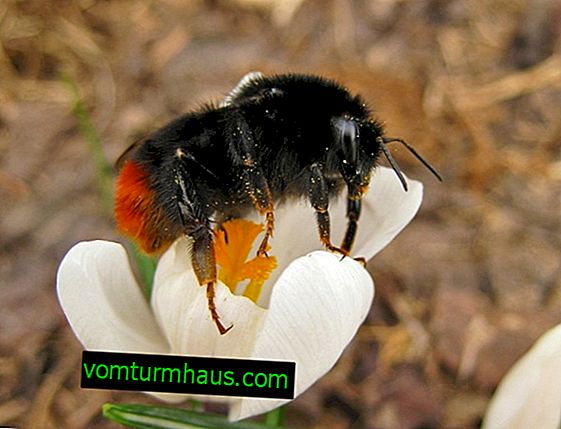
- Forest . As the name implies, it lives in forest-steppes. It has a dull color with a predominance of gray tones. Lives on the surface of the earth.

- Garden Their range is Europe, the Urals, Transcaucasia, Siberia, the Far East. The size of the uterus is up to 2.4 cm, drones up to 1.5 cm. The back of the insects is black and yellow, the belly is black with a strip of yellow and a white base. They live underground.
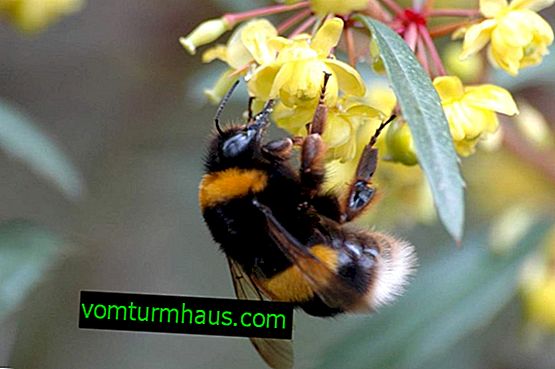
- Bumblebee Cuckoo . It is interesting in that it behaves like a parasite - it does not build nests and does not collect nectar. He throws his eggs into the families of the usual species of bumblebees, which feed the hatched larvae.
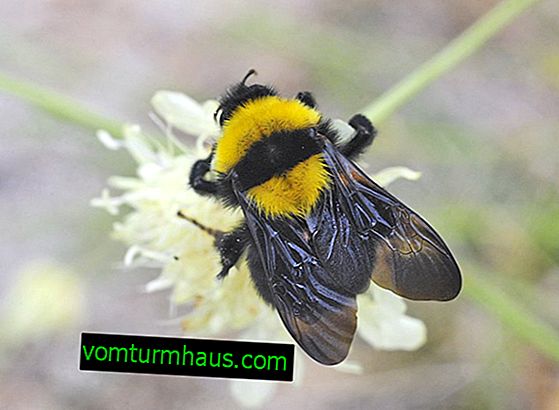
What are bumblebees for?
These large insects are of great value to humans as excellent pollinators. They are used for pollination of vegetable and flower plants in greenhouses and greenhouses. It is a known fact that in Australia, when growing clover, it was not possible to achieve its propagation by seeds, until bumblebees from Europe were brought to this continent.
Since then, in many countries, these insects have been specially bred artificially to pollinate clover fields. Summer residents prefer to lure these pollinators into gardens and greenhouse constructions, insulating them and building a dwelling there for them. Unlike bees, bumblebees are characterized by excellent ability to navigate in a confined space: to see how an insect beats against transparent windows or walls is practically impossible.
Did you know? The British conducted an experiment in which they placed a flower with nectar behind clear plastic. To get to it, the bumblebee had to pull a rope and pull it out from under the plastic - surprisingly, the insect successfully coped with this task.
The thin trunk of the insect allows you to collect pollen and nectar from plants that have a very narrow corolla. But the honey properties of bumblebees do not represent value for humans - insects do not put off large reserves. Their honey consists of water for 20%, has a short shelf life for consumption, moreover, it is not too sweet and fragrant.
Bumblebee habitat and lifestyle
To complete the picture of insects such as bumblebees, you need to get acquainted with their lifestyle - how and where they live, what they do, what they eat, how they breed. These insects live in families of 100-200 individuals. They have 3 social groups: large breeding females, drones-fertilizers, working individuals.

The latter are engaged in the collection of nectar and home improvement. In regions with a short summer, bumblebees live alone, because they do not have time to start a family for a short period. Insects make nests in the ground, litter of leaves and moss, abandoned hollows, nests, burrows, forming them from wax honeycombs and empty cocoons of pupae. They are not arranged as harmoniously as in bees, but more often have a promiscuous appearance. Wax cells they form oval, irregular in shape.
How long does a bumblebee live?
These insects are born in the spring, and in the fall, when cold weather sets in, they die. One adult working individual is able to live for about 14 days, males live for about 30 days. Only a fertilized female can survive one winter. She seeks warm shelter in buildings or land, in the spring she takes out the larvae and, after feeding them, dies.
Learn all about hornets as well.
What does a bumblebee eat
The insect eats nectar and pollen from plants. In search of food, workers can reach speeds of up to 18 km / h. The back is adapted for the transfer of nectar in an insect. On the shins there are spurs with villi, which form a special “basket” for collection and transportation. One individual can carry as much nectar as its own body weighs.

Larvae, in addition to nectar and pollen, also eat honey. If there are no honey plants in the vicinity, then the insect can feed on plant sap. It bites its strong jaws into the trunk to extract juice from it.
How do bumblebees breed?
A female fertilized by a drone is capable of laying from 200 to 400 eggs, at a time - up to 16 pieces. At first, it gives eggs from which working individuals emerge, and later those from which females and drones hatch.
The described insects go through 4 stages of development: egg - larva - pupa - adult (adult). In the larval stage, the insect stays from 10 to 14 days, in the pupal stage - 2 weeks. In total, the development process covers a period of one month.
We recommend reading why bees disappear.
Enemies of Bumblebees in Nature
In the natural habitat, the insects in question have many enemies: they are threatened by foxes, badgers, voles and other rodents that eat them. Ants also pose a great danger to bumblebees - they eat honey made by them and larvae.
Bumblebee bite and its consequences
As we have already noted, bumblebee stings rarely and only as a defense. When bitten, he sticks a sting in the skin of a person, injects poison with it and removes it. It can inflict several bites, because its sting does not remain in the human body, but is easily pulled out. Through the clothes, these insects do not sting. A bumblebee bite is painful - after it, swelling, redness, and itching may occur. Rarely, but allergy is possible.

If you become a victim of a bite of this insect, then you need to take the following steps:
- Take an agent that relieves inflammation and eliminates pain, for example, Ibuprofen, Nurofen.
- Apply a cold compress to the bite site.
- Lubricate with an itch remover after insect bites.
- Drink plenty of warm, sweetened fluids.
Allergies develop only in 1% of cases, always after applying a second bite. The time of occurrence of the reaction is from several seconds to half an hour. Depending on the severity of the condition and the threat to health and life, 4 stages of allergic reactions are distinguished.
Important! If the bite fell on the tongue, the inside of the mouth, and the eyelids, urgent need to seek medical help. In such cases, the introduction of corticosteroids is required.
The most dangerous of them is 4, in which the development of anaphylactic shock and loss of consciousness are possible. All 4 conditions need medical attention and supervision. With them, antihistamines and adrenaline are administered. So, bumblebees are large winged insects that collect nectar from flowers, produce honey and are useful as pollinators in horticulture and in the cultivation of garden plants.











